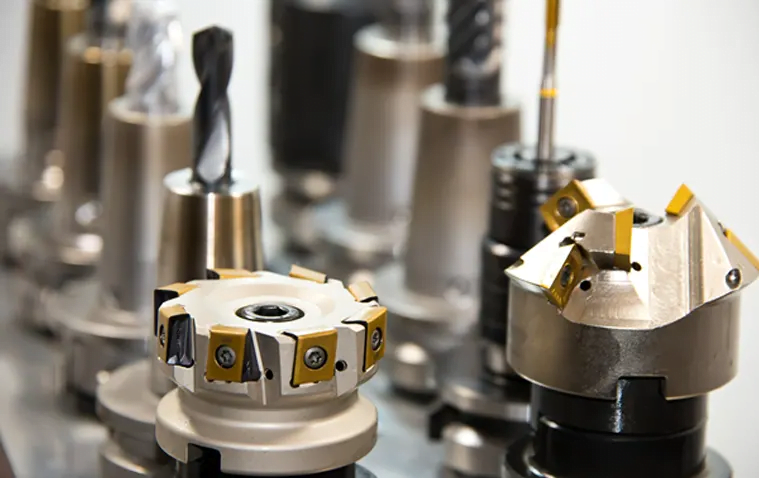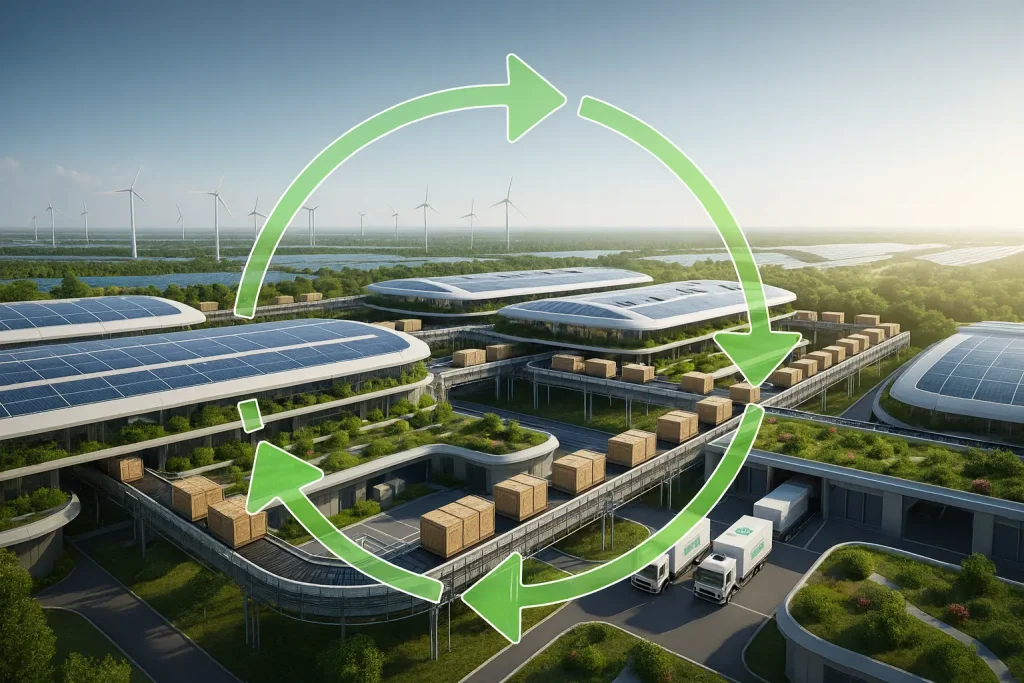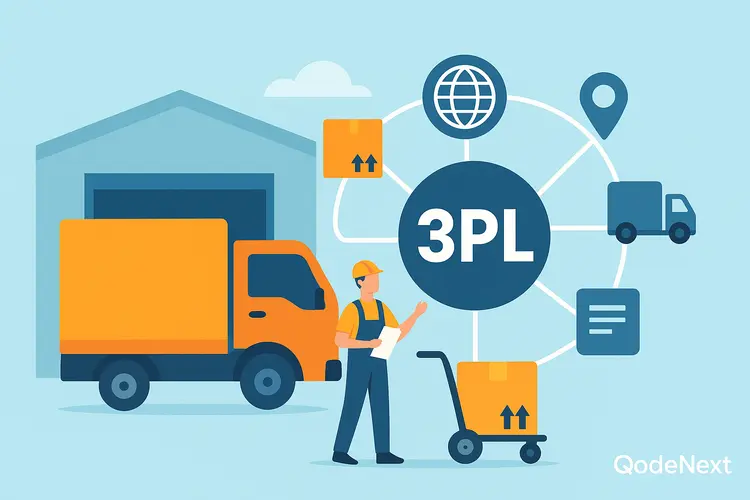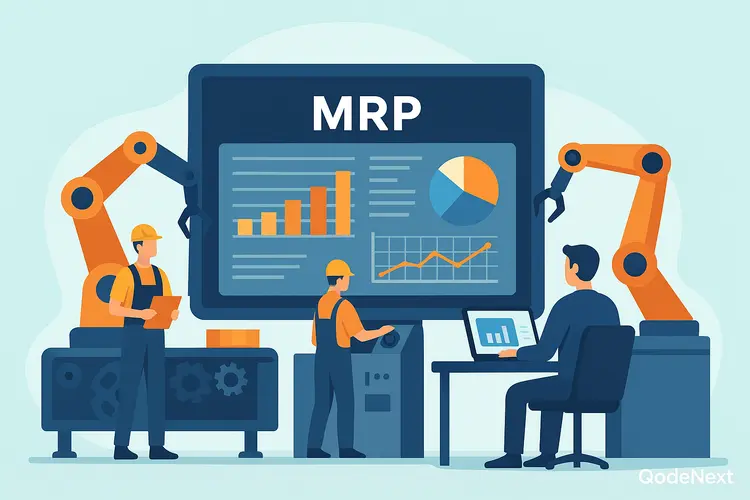2021 brought about several challenges to the Indian manufacturing industry. Residual impacts of the pandemic continue to be felt, with industrial production and capacity utilization falling back to pre-pandemic levels. In the midst of all these disruptions, sustaining the business hasn’t been easy. To thrive in an increasingly competitive and disruptive landscape, manufacturers will have to stay ahead of the latest manufacturing trends and adopt strategies that address economic volatility, worker productivity, and production safety.

Here are 7 manufacturing trends to look forward to in 2022:
1. Smart factory adoption:
In 2022, manufacturers in India will increasingly drive efforts towards smart factory adoption to capture growth and safeguard long-term profitability. They will look at embracing modern digital capabilities across the length and breadth of their organisation – from the C suite to the factory floor – to drive much-needed competitiveness. Having the right technologies in place will allow them to build a connected, reliable, and efficient business while also enabling them to scale their business and transform their operations. Investments in Cloud, AI, and IoT will be huge, as manufacturers look to drive visibility, scale, and speed.
2. Intelligent warehousing:
In the coming year, intelligent warehousing will be another trend that every manufacturer will look to embrace. Using technologies like AI/Machine Learning and Digital Twins, manufacturers will be able to adapt their warehouses to dynamic changes in the business landscape. Robots will allow manufacturers to enhance operations, optimise routes, and have updated information about packages, shelves, and warehouse systems. And intelligent monitoring techniques will help increase utilisation of available resources, streamline order fulfilment, boost business revenues, and improve cash flows.
3. Widespread hyper automation:
As the Indian manufacturing sector faces an excessive labor shortage, hyper automation will come in handy in sustaining manufacturing output. Despite a declining labor force, hyper automation will help in keeping up with the increase in demand while making the best use of the existing workforce. With border closures and travel restrictions continuing to play a spoilt sport, automation and robotics will empower manufacturers to restructure processes and re-evaluate how they can complement their existing skill set with hyper automation. While frontline workers will take on roles and responsibilities that require strategic thinking, robots will take over most of the mundane, back-office operations – leading to higher efficiency, reduced errors, and quicker turnaround times.
4. ESG and sustainability in manufacturing trends:
Increased awareness across environmental, social, and governance (ESG) and mounting pressure from investors, regulators, and environmentalists will find manufacturers quickly jumping on the sustainability bandwagon. In 2022, many will take a relook at their sustainability strategies and refine and elevate them as required – to accomplish their carbon-neutral goals, sustain their financial health, and drive competitiveness. They will also drive efforts in keeping up with expectations on workforce diversity and inclusion and tap into newer pools of capital to enhance shareholder value. For instance, natural resources company Vedanta has pledged $5 billion over the next 10 years to accelerate the transition to net-zero operations.
5. Traceability via unique identity creation:
As manufacturers struggle to track and monitor raw materials, work-in-progress goods, and finished products across globally disrupted supply chains, innovative traceability solutions that enable faster on-time deliveries, increased sales, and improved customer satisfaction will be in high demand. In 2022, solutions that enable Unique Identity Creation will enable manufacturers to accurately trace goods across warehouses, strike the right balance between supply and demand, and keep up with the transparency that consumers have come to expect; using a single ID, they will be able to know where their goods are in real-time – thus increasing visibility as well as business agility. Such solutions will be extremely useful to keep up with the quality standards necessitated by GST, excise officials, and export compliance bodies while also increasing operational efficiency, streamlining recalls, and more accurately pinpointing and isolating bottlenecks.
6. RFID asset tracking:
Manually tracking manufacturing assets will soon be a thing of the past. As manufacturing companies expand geographically and vertically, 2022 will witness massive growth in the RFID asset tracking space. These flexible and cloud-enabled asset tracking systems will enable manufacturers to monitor, manage, and support their assets optimally: right from their utility to their location in real-time, maintenance requirements, and life expectancy. Using these systems, manufacturers will be able to overcome laborious and time-consuming manual efforts while making the most of a centralized and mobile platform to issue, transfer, and repair assets while also taking care of depreciation, repairs, warranty, and AMC. These systems will ensure accuracy of and visibility into asset management processes, improve utilisation rate, extend asset life, and reduce repair and maintenance costs.
7. BLE-enabled fleet management:
2022 will also witness the Indian manufacturing industry increase adoption of BLE-enabled technology to manage their growing fleet. Bluetooth Low Energy will enable manufacturers to enhance visibility into their fleet while also seamlessly managing and controlling vehicle movement across facilities. By monitoring, scheduling, and tracking trucks from the gate to weighing bridges and parking bays, manufacturers will be able to get real-time visibility into the location of trucks, avoid traffic congestion, and enhance the accuracy of delivery. At the same time, it will allow them to get updated insight into available trucks, docks, bays, minimize the number of unproductive hours wasted in manual tracking of trucks, and resolve bottlenecks at gates that lead to delays.
Despite widespread economic disruptions, the Indian manufacturing industry is recuperating in a decent manner. However, to maintain this momentum, manufacturers need to be equipped to navigate elevated risks while advancing sustainability priorities. Embracing top trends in the coming year can enable them to turn risks into opportunities, compete in the market, drive business agility, and capture growth.
Emerging Manufacturing Industry Trends

Manufacturing industry trends are changing fast as automation, digital transformation, and sustainability take the front seat. Smart factories and AI-powered manufacturing are transforming the way businesses run. Knowing these upcoming trends in the manufacturing industry can assist enterprises in maintaining their competitive edge internationally.
1. Trending manufacturing business models are more efficient, more customized, and faster.
2. Automation, robotics, and data analytics power the trending manufacturing business environment.
3. Skill development, Innovation and smart technologies will be the focus areas of manufacturing trends in India.
4. Government schemes such as “Make in India” are stirring up manufacturing trends in India and bringing in worldwide investments.
4. Future trends in manufacturing: organic production, additive manufacturing and Internet of Things integration.
The companies that leverage the future trends in manufacturing will have higher productivity, and be more sustainable.
Digital processes, robotics and connectivity are pivotal to expansion. Companies that invest in innovating now are building the factories of the future.
Conclusion
At QodeNext We enable enterprises to capitalize on modern manufacturing trends through technology-enabled automation, traceability, and digitalized operations. Through the fusion of technology and process excellence, QodeNext equips manufacturers to drive greater productivity, higher quality, and resilient operations – readying them for the intelligent, connected future of manufacturing.
Frequently Asked Questions (FAQs) in Manufacturing trends :
1. What are the manufacturing trends?
Trends in manufacturing are automation, ai, and smart factories.
Focus on the sustainability.
Data-driven operations.
Customization and efficiency through automation and the use of IoT technologies.
2. What is a global trend in manufacturing?
A major worldwide manufacturing trend is digitalization.
Adoption of Industry 4.0.
Using artificial intelligence (AI), robotics and the Internet of Things (IoT).
Focusing on the environment and adopting circular economy principles.
3. What are the latest technologies in the manufacturing sector?
Emerging manufacturing trends in technologies include 3D printing, robotics and AI-driven analytics.
IoT-Enabled Machines.
Tools for predictive maintenance.
AR for Remote Monitoring and Training.
4. How can manufacturers become more sustainable and meet their carbon-neutrality ambitions?
Here are the ways manufacturers can:
Employ green energy.
Implement energy-efficient infrastructures.
Reduce waste by recycling it.
Streamline supply chains to cut emissions.
5. What Is “circular Economy” in manufacturing trends? How is it different from traditional linear model?
Circular economy is about reuse and/or recycling.
It is designed to cause minimal waste and difference from the linear “make-use-dispose” type of pattern of living economy.
Fosters resource efficiency and product life extension.
6. What are the sustainable initiatives such as waste and energy saving?
Manufacturers take a hint from Mother Earth and are using renewable energy, smart sensors and recycling systems.
Energy efficiency through automation.
Emphasis on sustainable packaging and water use.







